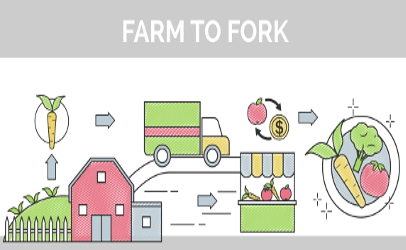 There are mountains of it; fresh, nutritious, beautiful — belonging on the finished plates of high-end restaurants, school lunch trays and dinner tables across America. But instead, it’s dumped into landfills to rot into nothing — enough each year to feed 3 billion people.
There are mountains of it; fresh, nutritious, beautiful — belonging on the finished plates of high-end restaurants, school lunch trays and dinner tables across America. But instead, it’s dumped into landfills to rot into nothing — enough each year to feed 3 billion people.
On top of that overall estimate, the Food and Agriculture Organization of the United Nations reports that problems with production, handling and storage are responsible for 54 percent of the world’s food waste, while 46 percent happens during processing, distribution and consumption phases.

Sometimes it’s because of compromised food safety from unstable temperatures, improperly sealed containers or mislabeling, but whatever the reason, it carries a hefty price tag.
In efforts to protect food during the trip from the farm to a consumer’s fork, the Food Safety Modernization Act include a rule on Sanitary Transportation of Human and Animal Food. It sets clear, defined responsibilities for shippers, loaders, carriers by rail or motor vehicle, to ensure food safety through sanitary practices while keeping in step with FSMA’s effort to shift food safety to a prevention focus.
While some methods used prior to the issuance of the rule are in compliance with FSMA, food companies will be able to more easily implement cutting-edge practices and safe guard their products with the help of technology to keep a close eye on sanitary conditions of shipping containers, temperature control and tracking of products.
“Today we have remote monitoring systems that we didn’t have very long ago and we’ve got the capability to watch a load all the way through,” said Dave Theno, CEO of Gray Dog Partners Inc. The food safety consultant’s long resume includes working with Jack in the Box during their E. coli outbreak in the 1990s, Kellogg’s, and current clients such as Costco and Subway.
“With product traceability requirements, which are a big part of this, we have the opportunity to stay ahead of the curve on this to know where loads are all the time.”
Along with tracking temperature control, this type of eyes-in-the-sky technology plays a huge role when it comes executing a recall, determining where things went wrong, and most importantly — preventing one from happening. Take allergen control for example, and the importance of proper truck sanitation practices being put in place.
“Let’s say you’re worried about allergen control and you’re handing something in a truck that had hauled peanuts before. So how do you protect the load that you’re hauling from becoming contaminated?” Theno said.
According to Theno, at the end of the day, it comes down to food companies continuing to practice proper food safety protocols.
“The actual compliance part of it is not the simplest to understand, but a lot of people are over guessing themselves about how complex it is to do. It’s kind of the same old story — just being enforced,” he says.
“It’s just really all about making sure food safety criteria that is relevant to the products is contained.”
Editor’s note: Watch for Part 3 of this series, which includes information about high-tech solutions to help food companies meet FSMA requirements, scheduled to publish Jan. 23.
(To sign up for a free subscription to Food Safety News, click here.)
